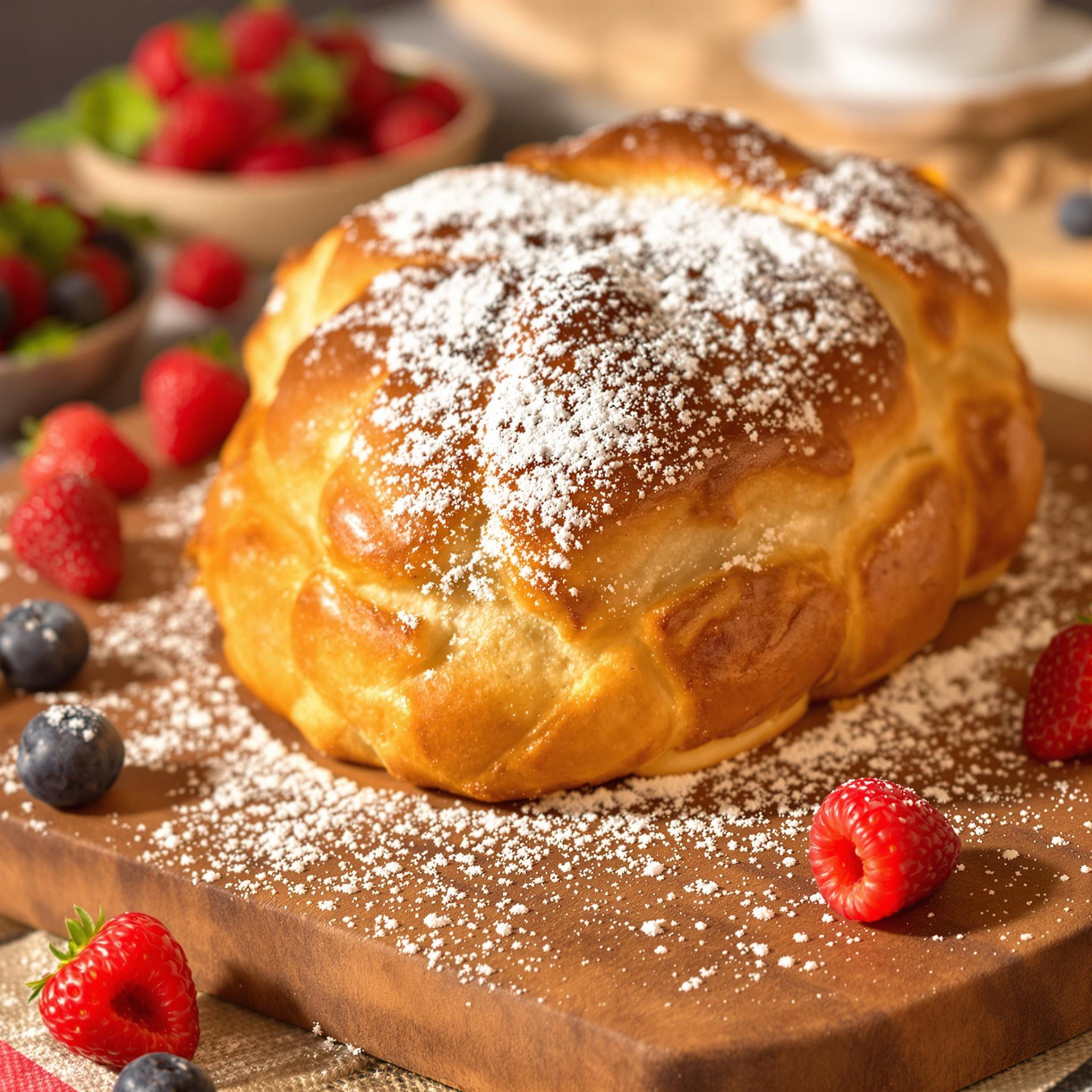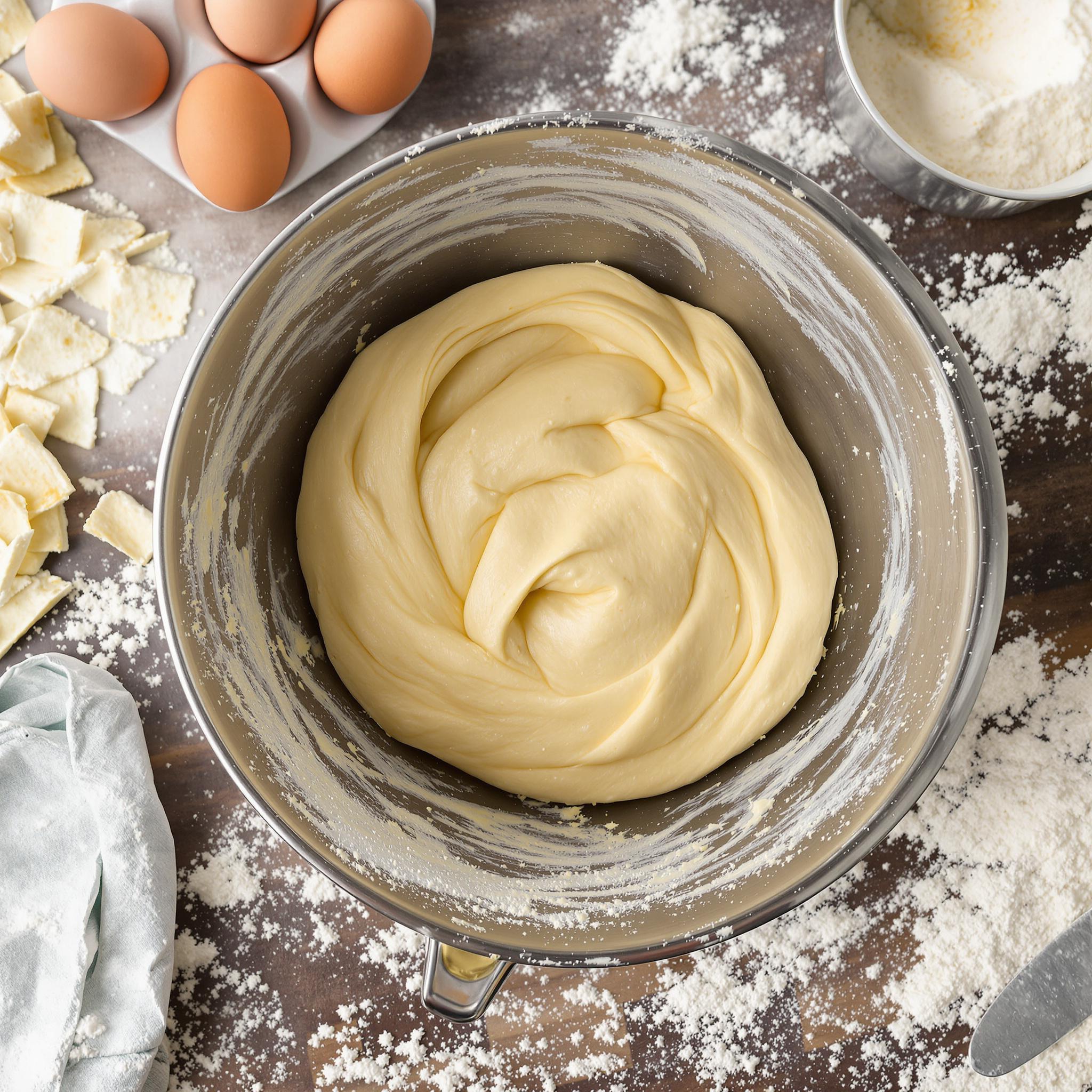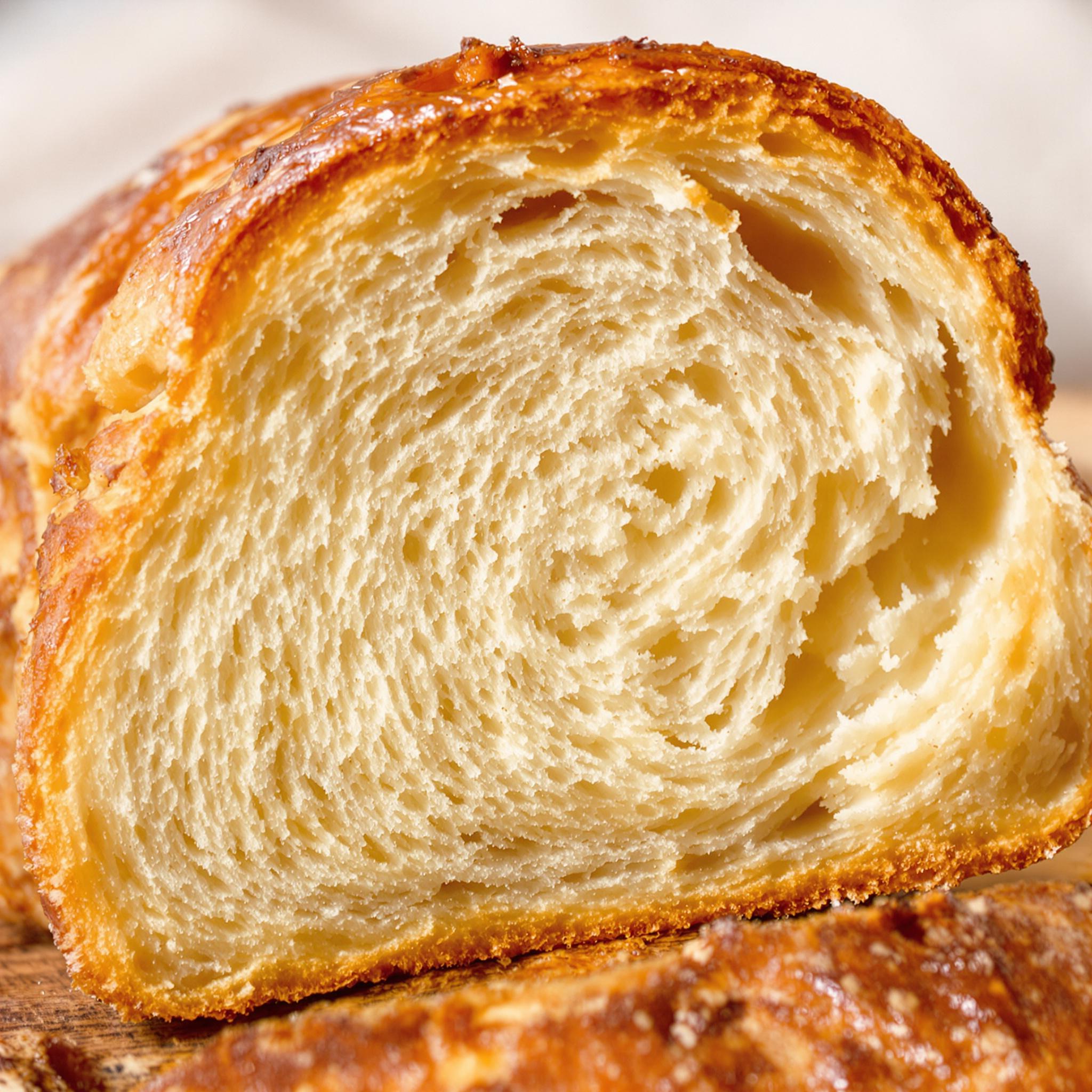
Introduction to Classic French Brioche Dough
Brioche is this buttery, soft bread with a ton of history. It’s perfect for breakfast or a quick snack. This Classic French Brioche Dough recipe will walk you through it step-by-step. I tried it last weekend and was blown away. The smell of butter and yeast filled the kitchen, and everyone was itching to dig in.
The History Behind Classic French Brioche Dough
Brioche started in France centuries ago. Back then, it was a luxury because of the pricey ingredients. Over time, bakers made it more affordable. Now, it’s everywhere. Sure, there are versions with chocolate, nuts, or fruit, but nothing beats the original.
Why You’ll Love This Recipe
This Classic French Brioche Dough is worth your time. It’s rich but not too sweet. The texture is light and airy, thanks to the yeast and butter. Plus, it’s versatile. Use it for sandwiches, desserts, or just plain with butter. Even if you’re new to baking, you can nail this.
Perfect Occasions to Prepare It
Serve this brioche on holidays like Christmas or Easter. It’s also great for brunches or tea parties. My family loves it on lazy Sunday mornings. You can even gift it during the holidays. Everyone loves fresh homemade bread.
Ingredients for Classic French Brioche Dough
- 3 cups all-purpose flour
- 1/4 cup sugar
- 1 teaspoon salt
- 3 large eggs
- 1/2 cup milk
- 1 cup unsalted butter, softened
- 2 1/4 teaspoons active dry yeast
Substitution Options
Swap all-purpose flour for bread flour if you want a chewier texture. Use almond or oat milk instead of regular milk for a dairy-free option. Instant yeast works if you don’t have active dry yeast. Margarine can replace butter, though the flavor might change a bit.
Step 1: Mixing Dry Ingredients
In a big bowl, mix flour, sugar, and salt. Whisk them together so they’re evenly distributed. Sugar feeds the yeast, and salt keeps fermentation in check. Make sure it’s blended well before moving on. Pro tip: Sift the flour to avoid lumps.
Step 2: Activating the Yeast
Whisk eggs and milk in another bowl. Add yeast and let it sit for 5 minutes. You’ll see bubbles—that means the yeast is alive. This step ensures your brioche rises properly. Make sure the milk isn’t too hot; warm is best.
Step 3: Forming the Dough
Pour the egg mixture into the dry ingredients. Mix until a sticky dough forms. Don’t worry if it feels messy at first. Kneading will smooth it out. The dough should hold together without being too wet or dry.
Step 4: Adding Butter
Add softened butter gradually while kneading. At first, the dough might resist. Keep going until it’s smooth and elastic. This takes patience but makes a huge difference. When done, the dough will feel silky and soft.
Step 5: Letting the Dough Rise
Cover the dough and put it in a warm spot. Let it double in size, which takes about 1–2 hours. Look for puffiness. Avoid drafts—they slow rising. Patience here leads to fluffy brioche.
Chef’s Tip
Brush the baked brioche with melted butter for extra richness. It adds shine and locks in moisture. Serve it warm for the best experience.
Time Required for Classic French Brioche Dough
Preparation takes 20 minutes. Rising takes 1–2 hours. Total time depends on resting, but expect around 2.5–3 hours. Plan ahead for the best results.
Nutritional Information
Each serving (about 50g) has approximately:
- Calories: 180
- Protein: 4g
- Fat: 9g
- Carbohydrates: 20g
An Interesting Curiosity
Brioche gets its name from “broyer,” meaning “to break.” This refers to breaking the dough during kneading. Its golden color inspired terms like “brioche blonde.”
Necessary Tools
- Large mixing bowl
- Whisk
- Kneading surface
- Clean kitchen towel
- Baking sheet
Storage Instructions
Store cooled brioche in an airtight container. It stays fresh for up to 3 days at room temperature. For longer storage, freeze slices in zip-top bags. Thaw overnight before serving.
Avoid refrigeration—it dries out the bread. Wrapping tightly prevents staleness. Reheat gently in the oven for the best taste.
Label frozen portions with dates. Use within 2 months for optimal quality. Proper storage keeps brioche delicious.
Tips and Tricks
Knead thoroughly to develop gluten. Use room-temperature ingredients for smoother mixing. Chill the dough if it becomes too soft. A stand mixer saves effort. Rest dough fully before shaping.
Serving Suggestions
- Slice and spread with jam or honey.
- Pair with coffee or tea for breakfast.
Healthier Alternatives for Classic French Brioche Dough
Here are six ways to make this brioche healthier:
- Whole Wheat Brioche: Replace half the flour with whole wheat. Adds fiber and nutrients.
- Reduced Sugar Option: Cut sugar by one-third. Still sweet but less indulgent.
- Olive Oil Substitute: Use olive oil instead of butter. Lower in saturated fat.
- Egg-Free Version: Swap eggs with flaxseed gel. Vegan-friendly choice.
- Low-Fat Milk: Use skim milk to reduce calorie count. Works just as well.
- Spelt Flour: Try spelt for a nutty flavor. Easier to digest than regular flour.
Common Mistakes to Avoid
Mistake 1: Skipping the Yeast Activation
Some skip activating yeast, assuming it’s fine. Dead yeast won’t rise. Always proof it in warm liquid. Check expiration dates too. Fresh yeast makes a difference.
Mistake 2: Overworking the Dough
Over-kneading toughens the dough. Stop once it’s smooth and elastic. Overworked dough won’t rise well. Practice feeling the right consistency.
Mistake 3: Using Cold Butter
Cold butter doesn’t incorporate smoothly. Soften it beforehand. Microwave briefly if needed. Lumpy butter ruins texture.
Mistake 4: Rushing the Rise
Rushing causes poor texture. Let the dough rise fully. Patience yields better results. Warm spots speed up rising safely.
Mistake 5: Baking Too Hot
High heat burns the outside before cooking inside. Bake at moderate temperatures. Adjust oven racks for even baking. Use a thermometer if unsure.
Frequently Asked Questions
Can I use instant yeast?
Yes, instant yeast works fine. No need to activate separately. Just mix directly into dry ingredients. Results remain consistent.
How do I know when the dough has risen enough?
Look for doubled size and a puffy appearance. Gently press; it should spring back slowly. Under-risen dough lacks volume.
What if my dough is too sticky?
Add a small amount of flour gradually. Avoid adding too much, as it affects texture. Sticky dough often firms up after resting.
Can I freeze the dough?
Yes, wrap tightly and freeze. Thaw in the fridge overnight. Shape and let rise again before baking. Freezing preserves freshness.
Why is my brioche dense?
Dense brioche happens from under-rising or over-kneading. Ensure proper yeast activation and resting times. Follow steps carefully.
Can I make mini brioches?
Absolutely! Divide dough into smaller portions. Adjust baking time accordingly. Mini brioches bake faster than larger loaves.
Is brioche vegan-friendly?
Traditional brioche isn’t vegan due to eggs and butter. However, substitutes exist. Flax eggs and plant-based butter work well.
How long does brioche stay fresh?
At room temperature, brioche lasts 2–3 days. Store properly to prevent drying. Freeze for extended shelf life.
Can I add flavors to the dough?
Yes, try vanilla extract or citrus zest. Fold in chocolate chips or dried fruit. Customize based on preference.
What tools make kneading easier?
A stand mixer with a dough hook simplifies kneading. Wooden spoons or hands work too. Choose what suits you best.
Conclusion
This Classic French Brioche Dough recipe is a joy to make and share. Whether enjoyed plain or customized, it never disappoints. Follow the steps, avoid common mistakes, and savor every bite. Happy baking!

Equipment
- Large mixing bowl
- Whisk
- Kneading surface
- Clean kitchen towel
- Baking sheet
Ingredients
- 3 cups all-purpose flour
- 1/4 cup sugar
- 1 teaspoon salt
- 3 large eggs
- 1/2 cup milk
- 1 cup unsalted butter, softened
- 2 1/4 teaspoons active dry yeast
Instructions
- In a large bowl, combine flour, sugar, and salt. Whisk them well to distribute evenly.
- Whisk eggs and milk in another bowl. Add yeast and let it sit for 5 minutes.
- Pour the egg mixture into the dry ingredients. Mix until a sticky dough forms.
- Gradually add softened butter, kneading constantly until it becomes smooth and elastic.
- Cover the dough and place it in a warm spot. Let it double in size, which takes about 1–2 hours.


